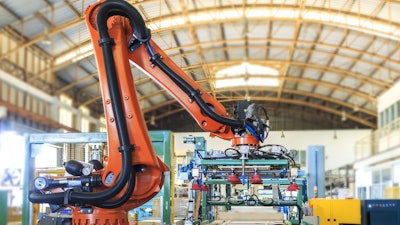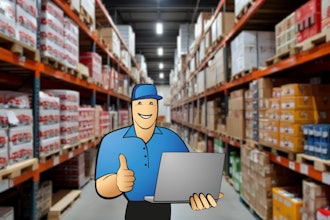
The warehousing and logistics industries are changing fast as more companies invest in the latest technology. Amazon has outpaced its competitors with ultra-fast, priority shipping. Many businesses are looking to reduce their overhead expenses while improving order accuracy and expediting the delivery timeline. While these goals may seem antithetical to one another, technology may be the solution.
Reports indicate the warehousing automation market is expected to grow $46.97 billion in 2019 to $120.08 billion in the year 2027. eCommerce vendors and warehouses are on track to gain the highest market share in the years ahead.
More businesses in the industry are looking to simplify the picking process by relying on what are known as automated guided vehicles (AGVs). These devices use special sensors to navigate the workplace, grabbing and moving packages automatically throughout the space. The sensors help these machines avoid collisions and workplace injuries. They are often connected to the warehouse operating system so they can retrieve items as soon as a new order is placed.
AGVs come in all shapes and sizes, but they are often best-suited for large warehousing operations in which large volumes of goods need to go out the door as quickly as possible. In these environments, human workers may be better utilized in different roles so they don’t have to scale shelves and operate forklifts hundreds of times a day.
Automated forklifts are having a moment. These large movable platforms automatically ascend and descend based on the location of the product in question. The forklift will then either physically grab the product and move it to the loading dock, or it will move it to the ground level, enabling workers to easily grab these items without manually using this equipment.
Predictive Analytics for Order Fulfillment
Studies show predictive analytics can help businesses better engage their customers on a variety of fronts. From the checkout interface to the types of products available online, these programs will help you unlock new insights into the preferences and behavior of your customers, thus making it easier to predict what they will order next and when.
Predictive analytics isn’t just about improving customer service. It’s about predicting future demand for your products so you can stock up on the right items and get orders out the door ASAP.
Your team can use this information to assemble orders and move merchandise based on the buying habits of your customers. Consider moving more popular merchandise to the loading dock, packaging items frequently bought together in the same container or getting rid of products that just tend to take up space.
Without this information, your facility could waste hundreds of dollars storing items that tend to collect dust. For these goods, consider moving them to an offsite storage location to save money and improve efficiency. These items should be kept further away from the loading dock and peak picking aisles to reduce confusion on the floor.
Reducing Packaging and Waste
Excess packaging and waste can be a headache for your employees, especially if you’re asking them to do more with less.
To preserve the environment, your workers will have to break down boxes, recycle plastic wrap and other forms of packaging. This will also add to your maintenance costs as you try to reuse and dispose of all this waste. Every time a new order comes in the door, your team may have to spend several minutes or more getting rid of this packaging.
Consider reducing your environmental impact by getting rid of as much packaging as possible. Look for ways to protect your products on the road and in storage without wrapping them in layers of plastic and cardboard.
Use industrial wire baskets for storage and shipping. These containers are completely reusable so you don’t have to keep ordering more supplies. They also keep your inventory visible, freeing your workers from the worry of opening containers and shifting through boxes when time is of the essence. These baskets are best for moving merchandise through your facility. They come with wheels, but they are much easier to use than forklifts. You can use them to store unwrapped consumer goods, such as toys, electronics, home goods and other popular items.
When moving your goods, we recommend the use of pallet containers. Plastic, reusable pallets will help you improve efficiency at every turn. Your workers and automatic forklifts can easily move pallets without damaging the contents of your packages. Pallets create more stability so you don’t have to invest as much in packaging.
For more quality assurance and control, use containers as close in size to the pallet as possible to reduce the chances of turbulence. Plastic bulk bins tend to be a great choice. You can move large quantities of goods in less time without putting your products at risk.
When handing off your goods to the consumer or client, utilize reusable bins and totes instead of disposable cardboard boxes. Your team won’t have to build up these boxes before sending out your orders. Your customers will appreciate your commitment to the environment as well. Just make sure you get these containers back when dropping off orders.
Less packaging also means fewer points of contact. When it comes to the spread of infectious disease, having your workers lift large containers with a forklift is often much safer than having them pick up dozens of boxes by hand.
From sustainability to increasing worker efficiency, the warehousing logistics industry is changing fast. As a business manager, don’t sleep on these trends. Use these tips to transform your operations so you can get a leg up on the competition. It’s all about working smarter, not harder as you help your employees make the most of your existing space.
David Madden is the President and Founder of Container Exchanger.






















